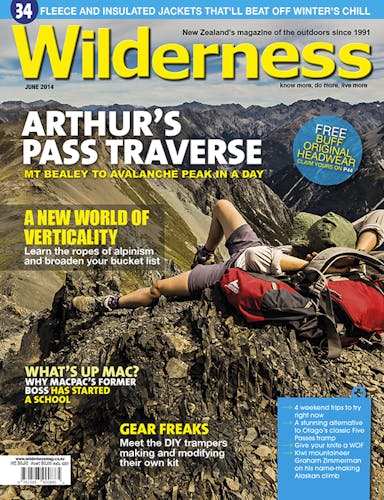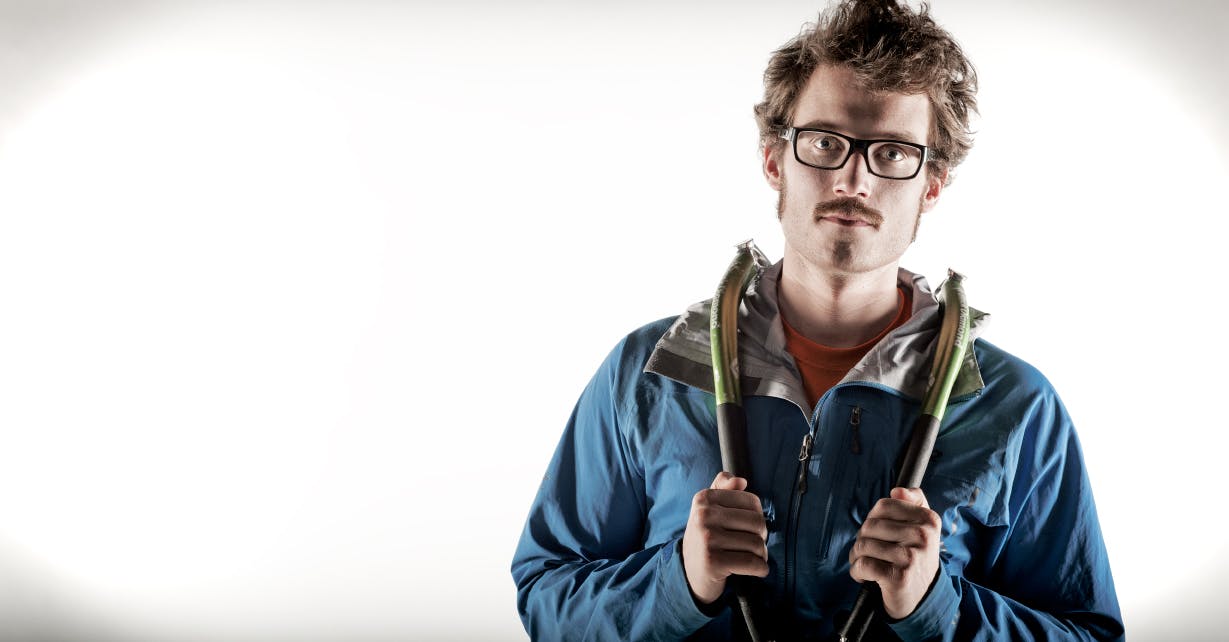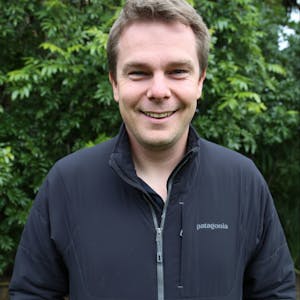Last year Graham Zimmerman achieved a feat that had the rest of the alpine world talking. It led to him becoming only the second New Zealander to ever be nominated for the most prestigious prize in alpinism. But, as the 28-year-old explains, he’s determined to keep his feet firmly on the ground
Alpinism isn’t an easy sport in which to measure success. You can’t score points, there’s no offside rule and it’s almost impossible to convert a summit once you’ve climbed it.
And that’s just how many of the world’s top mountaineers like it. The sport is, in a sense, above that form of competition. This is why, when Kiwi climber Graham Zimmerman was nominated in the Piolet d’Or this year, he was uncomfortable about accepting recognition. “Climbing is something which is incredibly subjective and is certainly not a competition,” he says. “This award should be taken with a grain of salt.”
However, the Piolet d’Or is the closest the mountaineering world has to a competition. It could be seen as the Oscars or Grammys of alpinism. Renowned New Zealand climber Athol Whimp won it in 1998 after completing the first ascent of the north face of Thalay Sagar, in the Indian Himalayas.
Other than Whimp, no other Kiwi has made the shortlist for the award until this year when Zimmerman, with American climber Mark Allen, made the first ascent of the north-east buttress and north ridge of Mt Laurens (3052m), a little known yet highly impressive summit in the Alaska Range in deepest darkest Alaska. Only climbed once before, Mt Laurens involves long stretches of exposed ice climbing.
“We first saw the peak in 2011,” says Zimmerman, who was born in Wellington. “We were on top of Voyager Peak and saw a hulking great big mountain and thought ‘what the hell is that?’. We couldn’t find any information about it at first – we just had a photo of a massive east face with huge buttresses on it – it looked incredible.”
They later discovered one climber, Thomas Bubendorfer, had climbed it in 1997, naming it Mt Laurens after one of his sons. Zimmerman and Allen were hooked on the mountain and planned an expedition there in May last year.
Zimmerman’s formative climbing years were spent in Aoraki/Mt Cook National Park and the Lake Ohau region. He says the New Zealand mountains thoroughly equipped him with the skills needed for climbing throughout the world.
This trip though would need exceptional skill, patience and decision making, but Zimmerman and Allen were up to the task.
“We flew in with pilot Paul Roderick and he found a spot where he was comfortable landing his plane. From there it was only 7km as the crow flies but required a lot of navigation – it was pretty arduous. It took two days to ski to base camp, getting around crevasses. There are glaciers that are a mile and a half wide.”
The climbers set up base camp around 2km from the face, but it took three attempts to make the summit.
“On the first attempt we got shut down on a steep feature with really big mushrooms hanging over us that we were concerned might fall. Then we tried another way and got shut down by what looked like really good ice climbing, but turned out to be frothy snow ice that was pretty well un-climbable.
“On our third attempt we got on to north-east buttress and, over the course of 59 hours, we made it to the top.”
The most concerning part of the climb, when they were just metres from the summit, was having to set up a bivvy so as not to be overcome by the onset of hypothermia.
“We’d been dealing with cornices all evening,” explains Zimmerman, “our layers became wet, the sun went down and the wind picked up. We were getting very hypothermic so we had to set up our tent in a crevasse and get our body heat back to normal.
“When you hit that point when you realise you’re losing mental capacity due to your body getting cold, it’s really disconcerting. That was the only point of the climb where we were seriously concerned. We could feel ourselves getting sluggish, which can lead to desperate decisions, which can easily become bad decisions.
“So we stopped, collected ourselves, warmed up and waited for the sun before continuing.”
They completed the last stretch to the summit the following morning, delighted. It had been a project they had spent two years planning and the mountain didn’t let them down in terms of majesty or challenge.
It never occurred to either of them that the achievement would be so well received internationally. The Piolet d’Or nomination suggests leading climbers around the world regard them as among the very best.
But it’s important to Zimmerman that they never see themselves in this light and to continue only for their love of the sport. “I really enjoy forming relationships with these mountain ranges. You can see the pictures in a guidebook, but there’s nothing like spending time in a range and gaining inspiration on it. This climb was one where we saw this thing in the distance, were inspired by it, and climbed it. It was our little project in a corner of Alaska and was super significant for us both.
“Mark and I are very focussed on staying humble in the mountains. If we regard what we’re doing as world class it will affect our decision making in a way that we don’t want. We need to continue making decisions that will ensure we can climb hard for a long time to come.”







